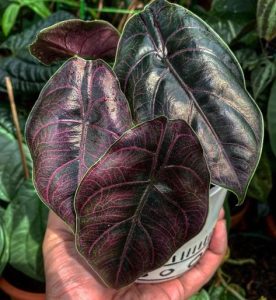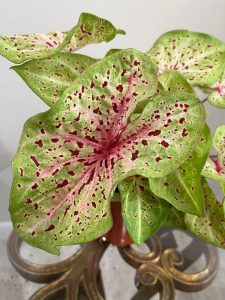- English
- Chinese
- French
- German
- Portuguese
- Spanish
- Russian
- Japanese
- Korean
- Arabic
- Irish
- Greek
- Turkish
- Italian
- Danish
- Romanian
- Indonesian
- Czech
- Afrikaans
- Swedish
- Polish
- Basque
- Catalan
- Esperanto
- Hindi
- Lao
- Albanian
- Amharic
- Armenian
- Azerbaijani
- Belarusian
- Bengali
- Bosnian
- Bulgarian
- Cebuano
- Chichewa
- Corsican
- Croatian
- Dutch
- Estonian
- Filipino
- Finnish
- Frisian
- Galician
- Georgian
- Gujarati
- Haitian
- Hausa
- Hawaiian
- Hebrew
- Hmong
- Hungarian
- Icelandic
- Igbo
- Javanese
- Kannada
- Kazakh
- Khmer
- Kurdish
- Kyrgyz
- Latin
- Latvian
- Lithuanian
- Luxembou..
- Macedonian
- Malagasy
- Malay
- Malayalam
- Maltese
- Maori
- Marathi
- Mongolian
- Burmese
- Nepali
- Norwegian
- Pashto
- Persian
- Punjabi
- Serbian
- Sesotho
- Sinhala
- Slovak
- Slovenian
- Somali
- Samoan
- Scots Gaelic
- Shona
- Sindhi
- Sundanese
- Swahili
- Tajik
- Tamil
- Telugu
- Thai
- Ukrainian
- Urdu
- Uzbek
- Vietnamese
- Welsh
- Xhosa
- Yiddish
- Yoruba
- Zulu
- Kinyarwanda
- Tatar
- Oriya
- Turkmen
- Uyghur

Popular for its elegant form and high shade tolerance, Chlorophytum—also called Crane Orchid and Spider Grass—is a common ornamental plant. Particularly fit as an indoor plant, Chlorophytum is highly adaptive and can survive in a range of environmental conditions. Still, the development of Chlorophytum depends critically on light conditions.

Chlorophytum
Chlorophytum’s light needs and growing patterns Native to South Africa is Chlorophytum. Of the Liliaceae family, this is a perennial evergreen plant. It may flourish in gloomy, semi-shaded, or sunny surroundings and is quite flexible. Nevertheless, the growth performance of Chlorophytum will vary under various light situations; this is mostly represented in the color of the leaves, the growth pace of the plant, and the blooming state.
Low light surroundings Strong shadow tolerance of Chlorophytum makes it a perfect indoor plant. Chlorophytum is appropriate for putting in areas with low light, including north-facing rooms or away from windows, even under low light settings because it can still maintain a decent development state. On the other hand, if it is in a low light environment for a long period, Chlorophytum’s leaf color may become duller and the leaf development rate will also slow down. Furthermore, spider plants are not simple to bloom in low light conditions; even when they do, the blooms are somewhat few.
Medium light surroundings
The most often used growing environment for spider plants in homes and offices is medium light, which also is their optimal condition. Usually referring to diffuse light or strong indirect light, medium light may be obtained by orienting windowsills east- or west-facing or by positioning windows close but apart from direct sunshine. Under such light, spider plants grow quicker, are more likely to blossom, and have brighter leaves. Spider plants’ branches will become denser, and the plant will seem generally more lively and healthier.
Highlight environment
Although spider plants have a certain light tolerance, excessive direct sunlight might hinder their development. Under too much light, spider plant leaves are easily scorched with yellow or brown blotches and even the leaf margins drying up. Usually referring to near south-facing windows, particularly in the noon sun in summer, high light surroundings are When installing spider plants in a high-light area, shading devices like curtains, shades, or positioning the plants away from windows should help to prevent this.
Seasonal variations in light needs
The seasons will affect the requirement for light of spider plants. Learning this guideline will enable spider plants to have appropriate light conditions over many seasons, therefore guaranteeing their good development.
Summer and fall
The best seasons for the development of spider plants are spring and fall; thus, light conditions are especially crucial for them. The mild light intensity and agreeable temperature in these two seasons make them perfect for the development of spider plants. Spider plants should be kept in a brilliant indoor environment with enough diffuse light during this period. If at all possible, correct morning or afternoon sunshine will help spider plants develop and brighten their leaves, therefore strengthening them.
The summer
The summer sunshine is intense, particularly around midday, and direct sunlight could harm spider plants. Shading spider plants in the summer should therefore be especially given extra care in order to prevent direct sunlight. Should the spider plant be kept outside, it is advisable to relocate it to a cool area, like under a tree or under a parasol. Should the spider plant be kept inside, it is advised to position it somewhat away from the window or use curtains to block too much sunlight.
Fall
The light need of the spider plant changes with the lower sunlight in winter and shorter sunshine duration. To extend the light duration and intensity, the spider plant may be positioned near the window or on a south-facing windowsill during this period. Appropriate sunshine may assist the spider plant stay in a healthy growing condition and prevent yellowing of leaves or slowing down of plant development because to inadequate light on warm afternoons.
Light and the leaf color of the spider plant
One may determine if the light of the spider plant is suitable by considering the change of color of its leaves. The leaves of a spider plant may seem brilliant green under appropriate light circumstances; other types have milky white or light yellow marks on the leaf margins. But the color of the spider plant’s leaves will also alter with changing light conditions:
Not enough illumination
The leaf color of the spider plant could becoming dull, less green, or even yellow under low light. The single green hue of the leaves’ marks will likewise progressively vanish. This kind of circumstance usually arises in darkly lit spider plants that have spent a lot of time in such conditions. Appropriate light increase may help to solve this issue.
Too great illumination
Spider plant leaves are more likely to burn in too bright light, which shows up as dry edges, yellowing or browning of the leaves. Too much sunshine could destroy the chlorophyll in the leaves, therefore diminishing their brilliance. Moving the spider plant to somewhere with softer light will help to prevent long-term direct sunlight.
remedies for inadequate illumination
Some steps may be done to boost the light of the spider plant in areas with low illumination thereby encouraging its healthy development.
Artificial light supplements
Artificial light may be used to augment the natural light for the spider plant in rooms with low illumination or during short daylight hours in winter. Common additional lighting instruments include LED plant lights and fluorescent bulbs. Given the paucity of natural light, it is advised to provide the spider plant 8 to 12 hours of illumination per day. When augmenting light, make sure to retain a certain distance separating the lamp from the plant to prevent overheating-induced leaf burning.
Adjust the arrangement.
Move the spider plant to a spot with more light, perhaps next to a window or on a balcony where it may get diffused light. Move the plant with consideration for progressively adjusting to the new surroundings to prevent stress responses brought on by abrupt changes.
Pruning and trimming
The growth rate of the spider plant could slow down and the leaves might becoming thin or drooping under low light. Good pruning helps the plant to remain generally beautiful and stimulates the development of fresh leaves. Pruning concurrently improves photosynthesis’s efficiency and lessens the demand for light on the leaves.

Chlorophytum Amaniense Fire Flash
The spider plant is a versatile decorative plant with quite low light needs that fits for many kinds of surroundings. Still, the growth performance of the spider plant may be much influenced by changing light circumstances. Different light intensities will influence the leaf color, plant growth rate, and spider plant blooming from low to medium light settings as well as high light situations. Therefore, the key to guaranteeing the healthy development of spider plants is knowledge and mastery of their light needs and suitable adaptations depending on real circumstances while growing them in home or business surroundings. By means of sensible light control, spider plants may not only become a major component of environmental beautification but also provide freshness and vitality to interior environments.
Previous News
The Chinese evergreen grows in an environment s...Next News
Ferns are suitable for indoor planting


